Merill Comeau creates installations, murals and garments. She uses the concept of disruption and reordering to build stories exploring memory, repair, regeneration and women’s experiences. Merill makes comment on societal expectations for sexual and emotional expression in her work. Her pieced fabric compositions explore historical and contemporary women’s roles such as the toil of the maker, the privilege of the wearer, the job of mothering and how to be a ‘good’ daughter.
Merill has shown her art in over seventy exhibitions including at the Danforth Museum of Art, the Fuller Museum of Craft and the Fitchburg Museum of Art. She has facilitated over thirty collaborative community art projects and has received grant support from the National Endowment for the Arts, Massachusetts Cultural Council and the Covenant Foundation.
Merill has received residencies three times at the Weir Farm National Historic Site in Connecticut. She has also completed residencies at Hambidge Center for Art and Science in Georgia, Acadia National Park in Maine, Catoctin Mountain Park in Maryland and the Vermont Studio Center. In addition, she lectures about fibre art in a post-modern context, creates work in healing groups and social justice communities and provides demonstrations of her techniques.
In this interview, read about how Merill drew upon memories of her childhood and her mother’s influence to create an installation titled ‘Family of Origin’, which explores universal themes including trying to make sense of our lives and the influence of our family. In this work, she stitched together snippets of fabric to represent the re-ordering and retelling of childhood narratives and the mending of wounds.
Learn how she prepared for this project through self-reflection, taking courses on dyeing fabrics and reading about the history of fabric design. With a firm base of ideas to guide her, she could focus on the concept behind her work in every choice during the creative process.
Name of piece: Family of Origin
Year of piece: 2017
Techniques and materials used: Dyeing, composting, stencilling, rubber stamps, drawing, stitching and embroidery. Repurposed fabrics and garments, thread, hair, sticks, weights, grommets, shoelaces, rope and yarn
Size of piece: 2m x 1m
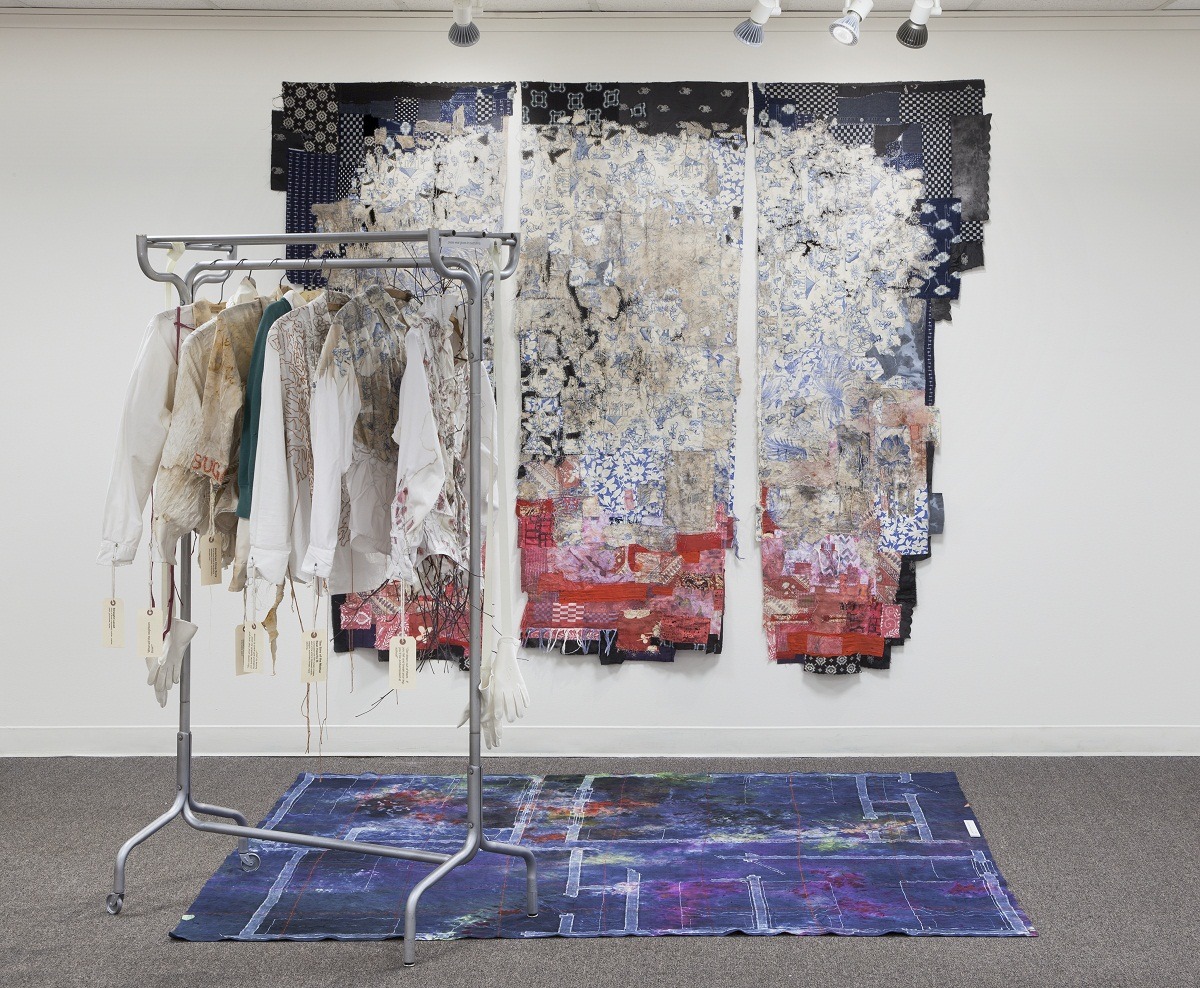
Self-reflection as inspiration
TextileArtist.org: How did the idea for the piece come about? What was your inspiration?
Merill Comeau: I was just emerging from a challenging time. My mother had recently died and I took the time to confront the breadth and depth of my extended family’s dysfunction.
After a weekend away of good food, love and laughter with a dear friend I climbed into my car to drive home in the early morning dark. As I drove the blue-black sky warmed at the horizon with reds and pinks.
Seeing the new dawn evoked a swell of optimism. I survive and thrive!
In my practice, I look into the past to understand the future. I analyse my personal thoughts and memories to try to understand the universal. These things inspired the installation ‘Family of Origin’.
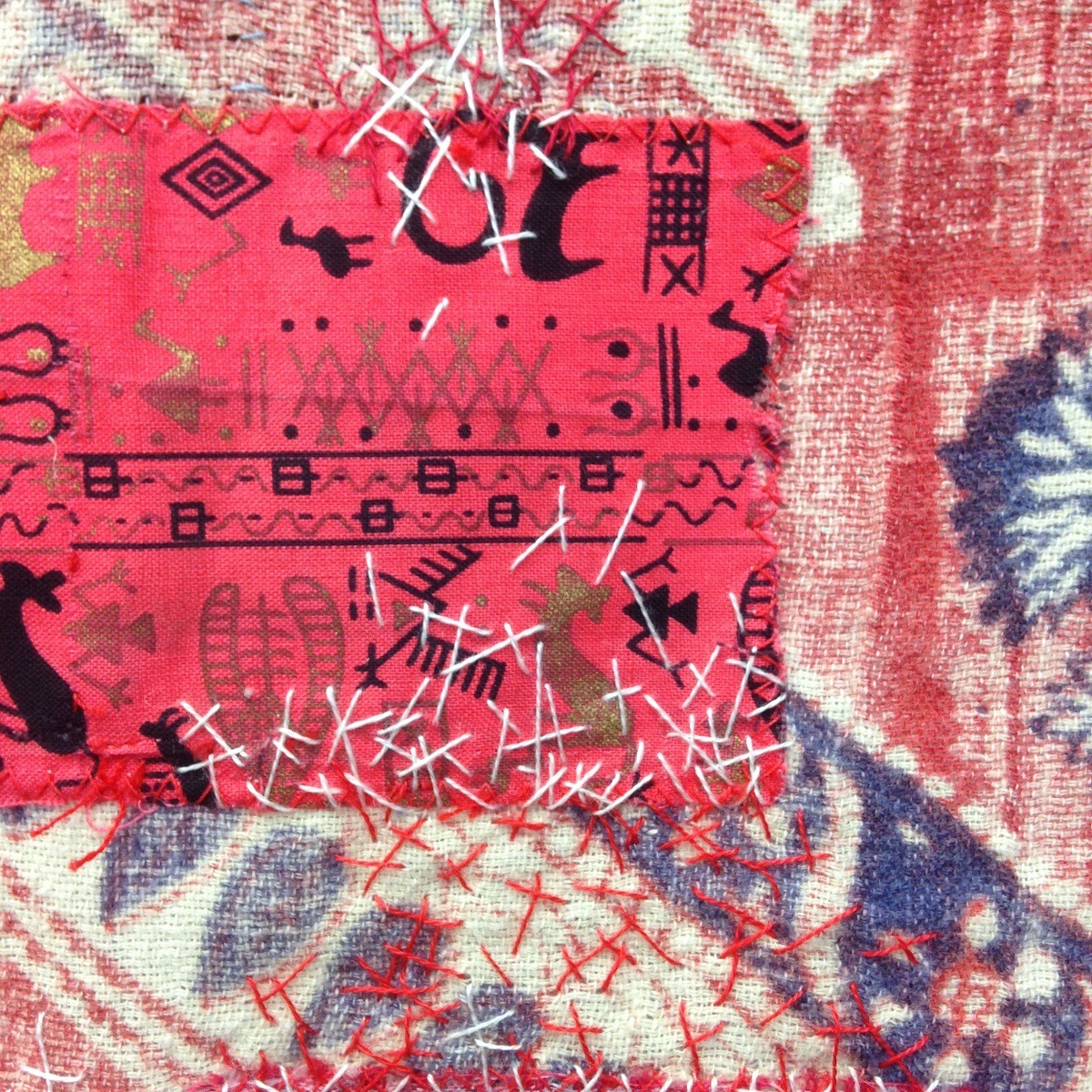
What research did you do before you started to make?
The Installation Family of Origin is made up of three elements:
A wall hanging titled “Cockcrowing”. This was created using Toile fabric with children’s designs. It was composted, laundered, reassembled then hand stitched. I wanted to represent the reordering of childhood narratives and the mending of wounds.
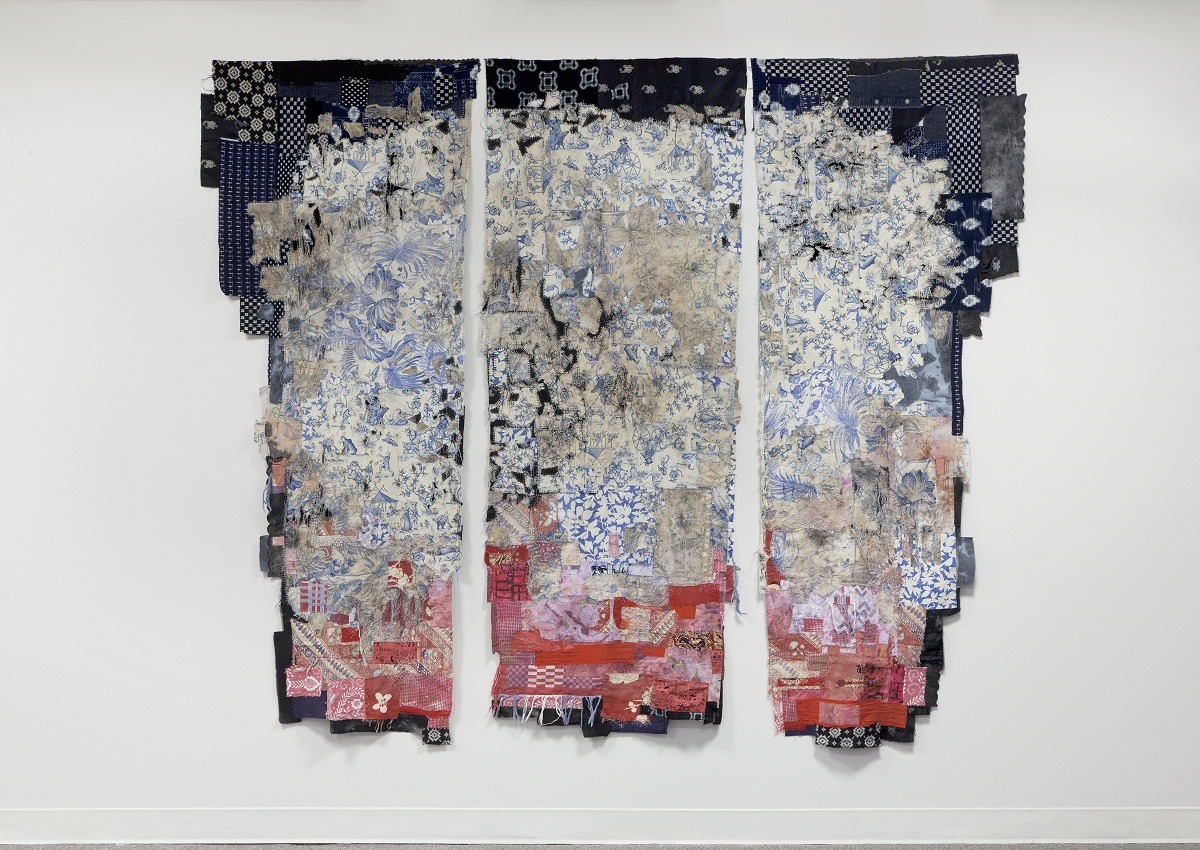
A floor cloth titled “Best Laid Plans”. This has stencilled floor plans of my childhood bedrooms overlaid with a grid of red stitching, representing the hours I spent day-dreaming and trying to create order in a disordered childhood.
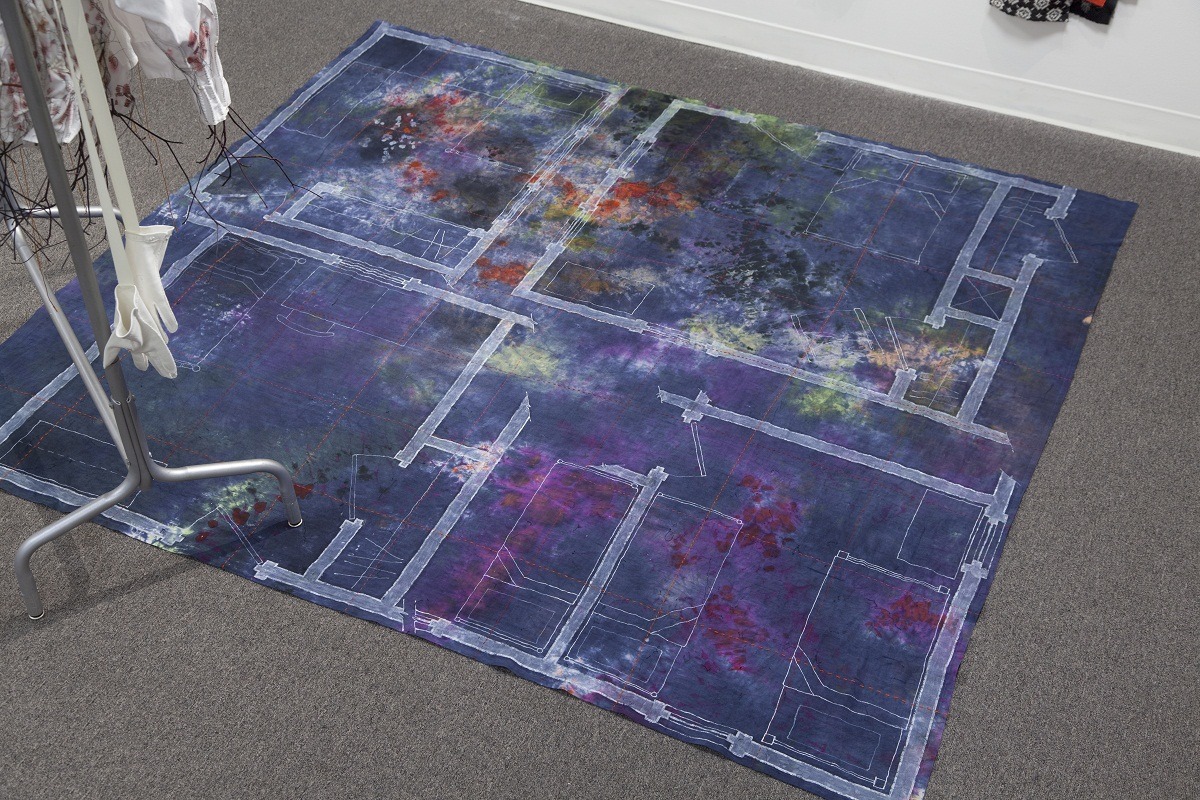
A collection of deconstructed, reconstructed, and embellished white blouses worn by my mother, titled “Foundational Garments”. Each garment tells a family story and is labelled with a quote about ‘how to be female’.
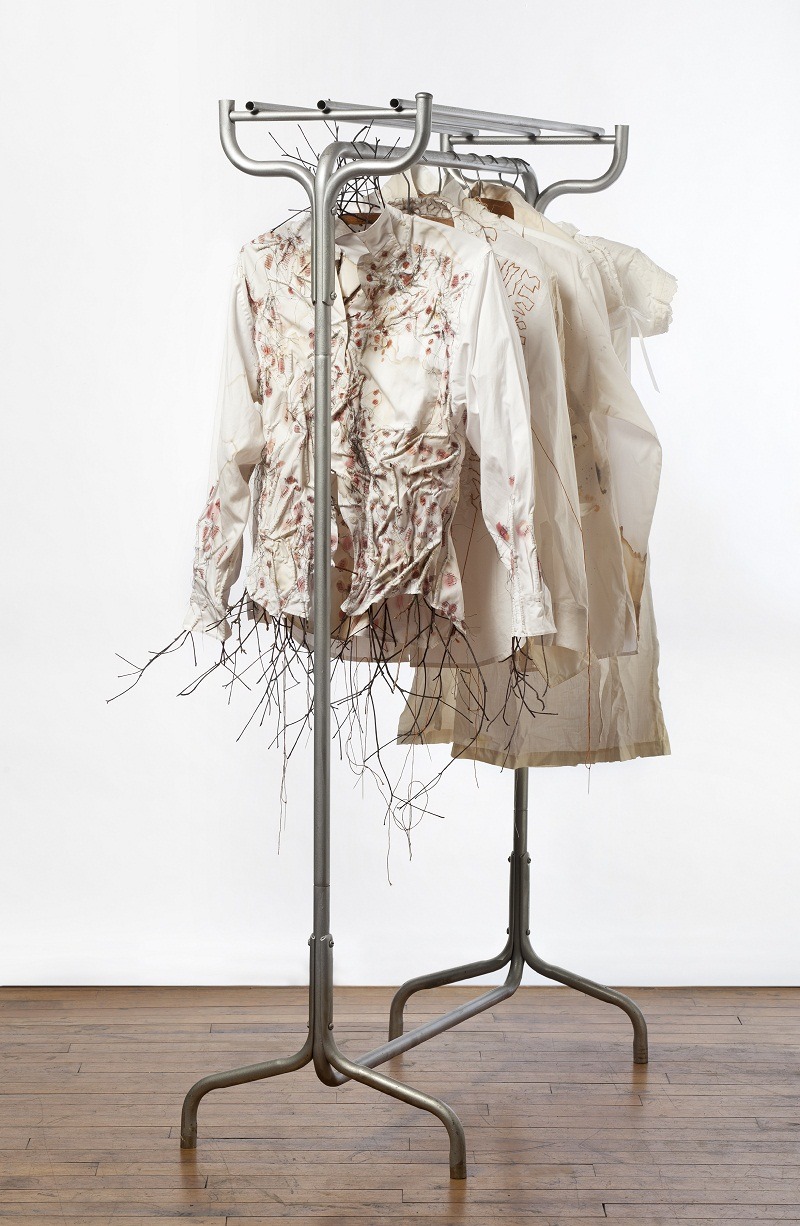
I spent a lot of time in self-reflection to prepare for this work.
I was asked by a writer friend to write an essay for her blog. She asked me to describe a building that meant a great deal to me. Tapping into memories of my favourite place as a girl, I wrote “The Farm” about an old house in New Hampshire where I found means of escape and moments of tranquillity.
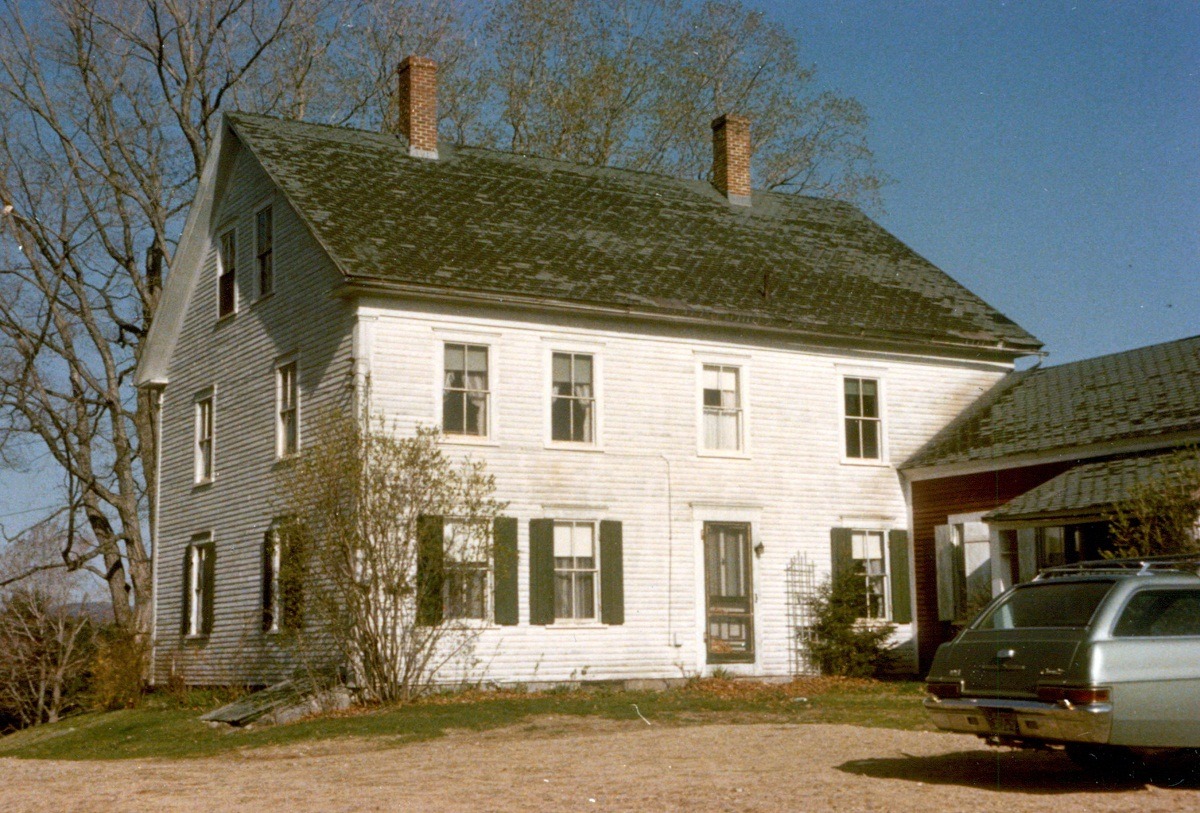
From a collection of family photos, I created a large drawing of previous generations, titled “Family Ghosts”. I thought about how we are influenced by family folklore.
Both of these exercises helped me form my conceptual base.
When I develop a strong enough big idea I have a guidepost. Then throughout the process of creating, my decisions are easy; each choice relates to, refers to or strengthens the concept.
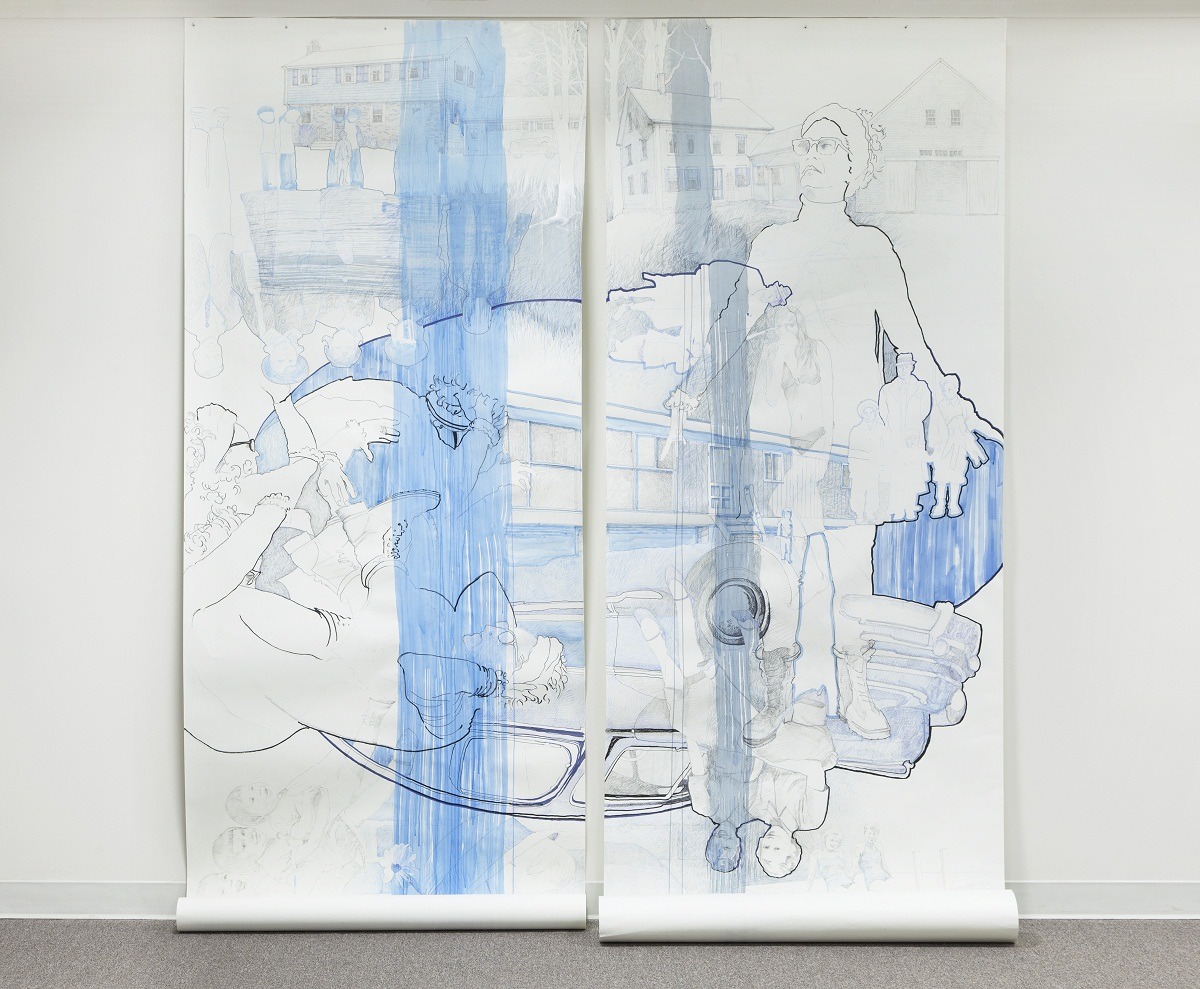
Researching fabric history and learning new techniques
Was there any other preparatory work?
In order to develop “Cockcrowing”, I studied historical and contemporary Toile designs and how they convey socio-economics, patterns of cultural exoticism, a society’s fanciful hopes or a designer’s critique.
I played with creating my own Toile design from photos of a bygone family but instead chose to recycle manufactured Toile festooned with nursery and garden imagery.
For the dark blue and warm tones, I drew from my stash of donated fabrics, discarded vintage linens from friends and their families and snippets from my mother-in-law’s old clothing.
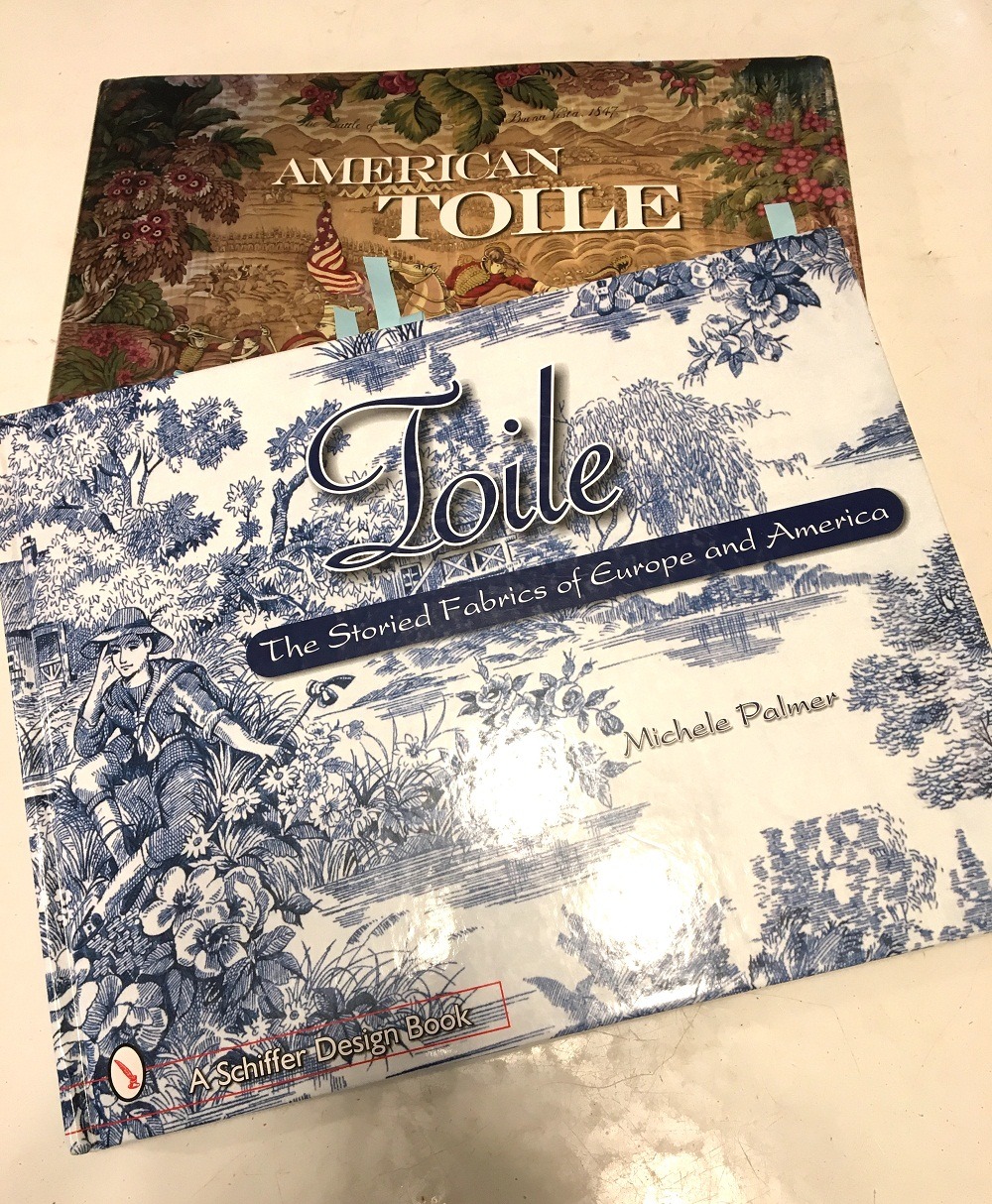
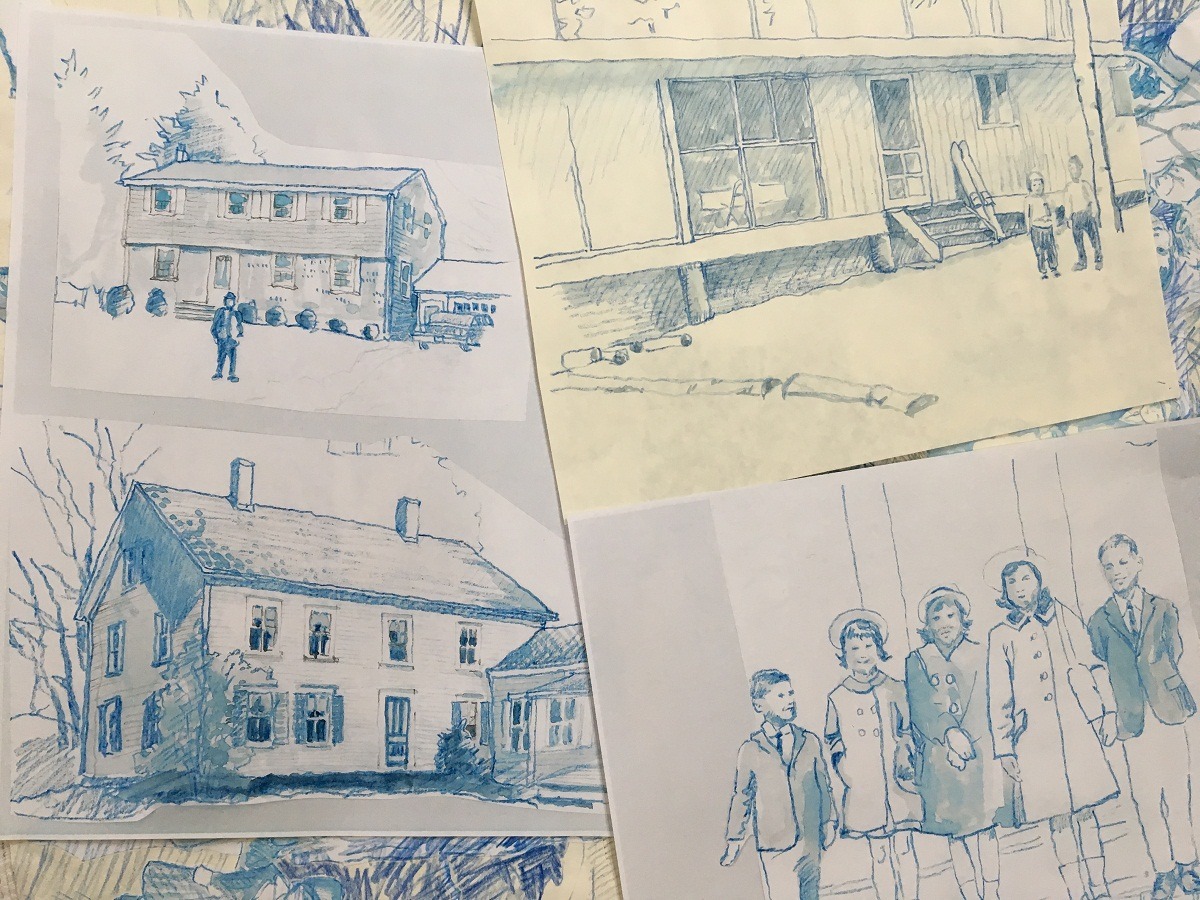
To increase my understanding of the history of my materials and to honour the makers and designers of the commercial and hand-made fabrics I used, I took an indigo-dyeing class with Amelia Poole at Port Fiber in Portland, ME and a reaction-dyeing class with Sue Benner at Pro Chemical and Dye in Fall River, MA.
There is extensive handwork in this installation. I was lucky to have a month alone as artist in residence at the Weir Farm National Historic Site in Wilton CT with oodles of time for focussed labour (from waking till sleep!) to prepare and make the work.
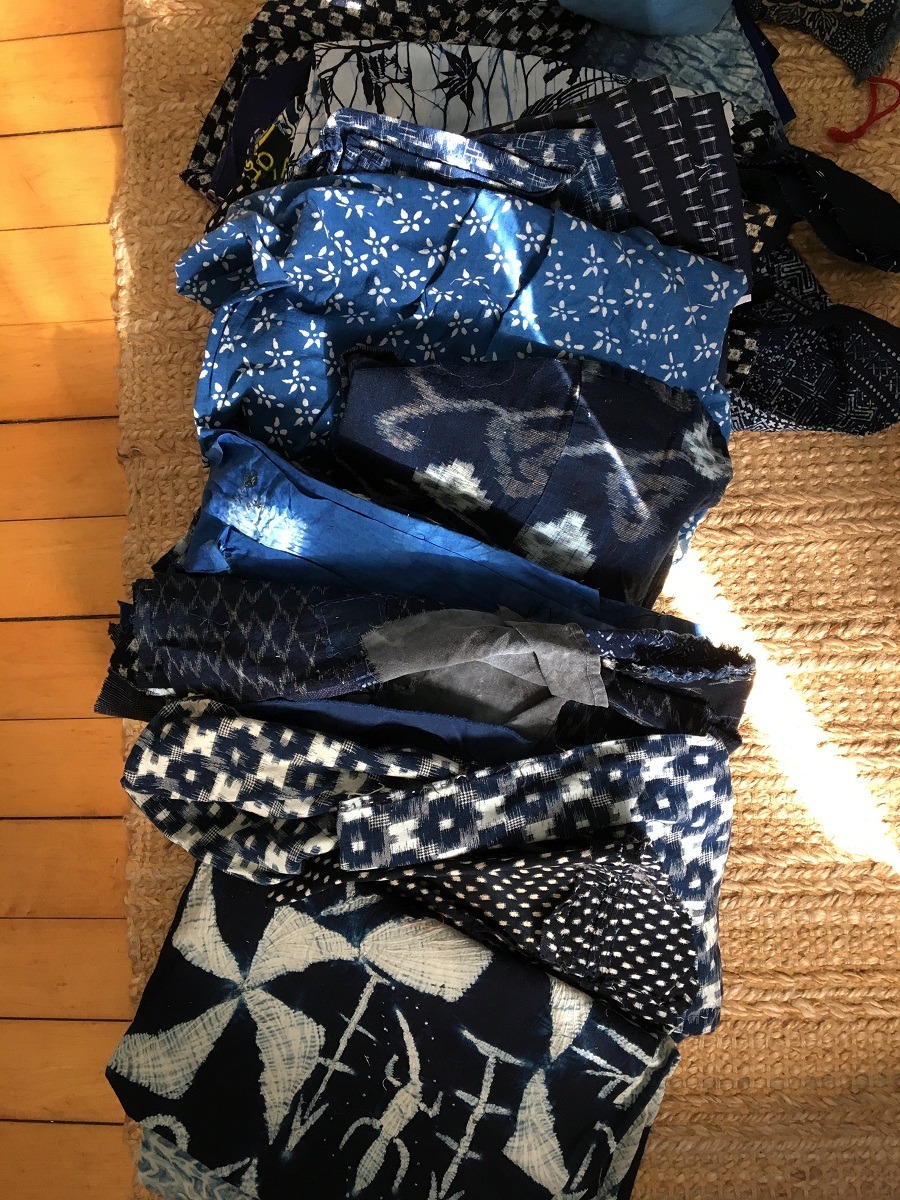
What materials were used in the creation of the piece? How did you select them? Where did you source them?
In my practice, I transform old used textiles into new contemporary expressions. I feel strongly about environmental sustainability and purposefully make use of recycled materials to highlight the waste of resources in the textile manufacturing process.
Old cloth is loaded with meaning and stories of lives lived. In creating a new textile I add my story to the mix.
This piece has many sources! My materials arrive from friends, family, and strangers that want to place their fabrics into the hands of someone who will respect their value and put them to good use.
One element is a favourite bedspread from a friend’s mother. It was so worn it was deliciously soft and almost transparent. Another was sourced a few years earlier from a woman whose mother had travelled extensively in Asia. I was honoured to receive indigo dyed fabrics which had been used by the mother to make the woman’s clothes. Her mother had died and she didn’t want to throw away the precious remaining scraps so she entrusted them to me. I received pieces of indigo fabric from a young woman who was a babysitter for my daughters; she brought us pieces as presents after living in Japan for a year. Indigo-dyed clothing was sent to me from Africa by a writer I met while on residence at the Hambidge Center for Art and Science.
I used this collection of specimens and fragments to create this as I felt they were particularly relevant in exploring family and how we are formed as women.
When I look at this installation, I see many people from my community all stitched together.
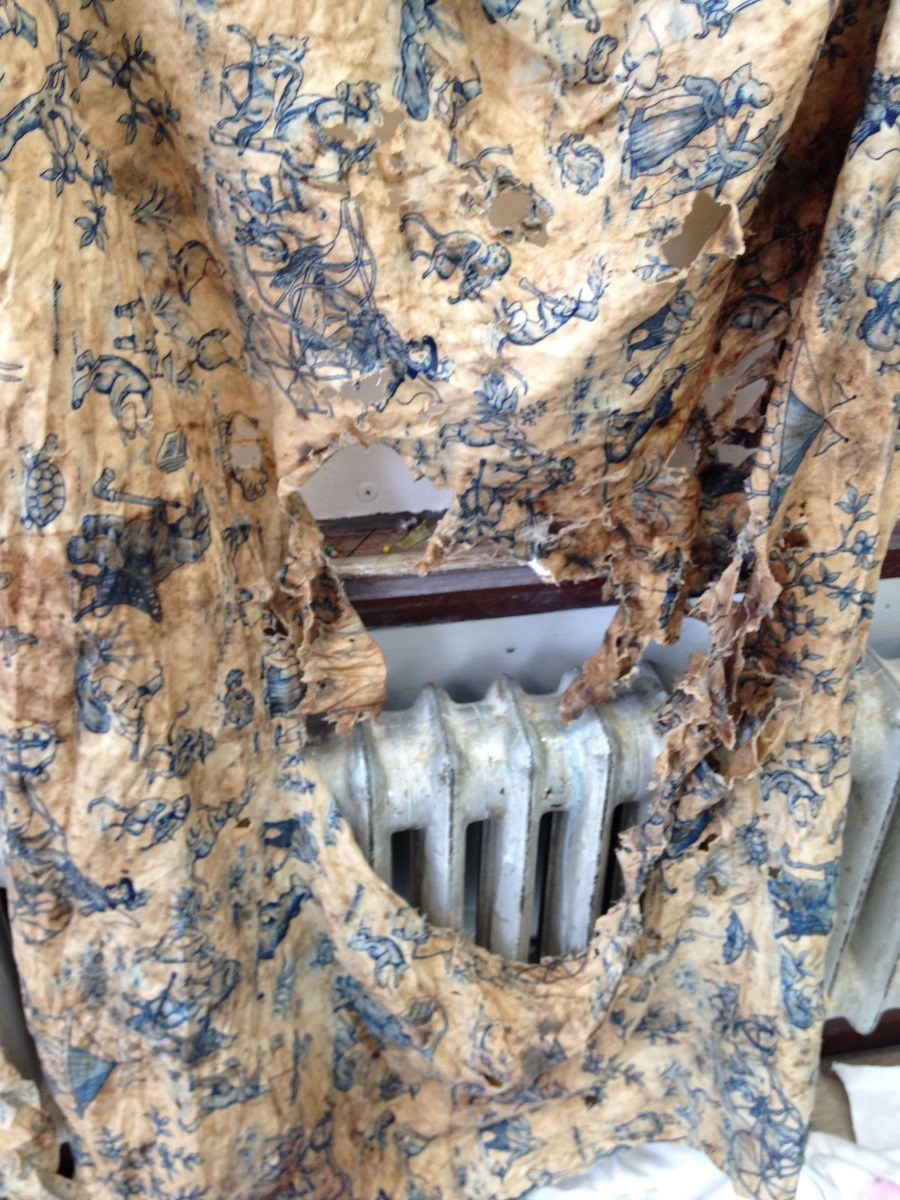
What equipment did you use in the creation of the piece and how was it used?
A simple seam ripper, scissors, needle, thread, and thimble are fundamental to my work.
I am a fanatic composter! My compost bin was essential to wearing and staining the Toile. Worms did a fabulous job of making holes! This destruction of the weave depicts the passing of time and clouding of memory. Stitching together snippets represents the re-ordering and retelling of stories.
I used coffee, tea and rust to stain the cloth. Stitched fibres and paint pens helped me draw lines. I used a small projector to help me create illustrations of the family on clothing.
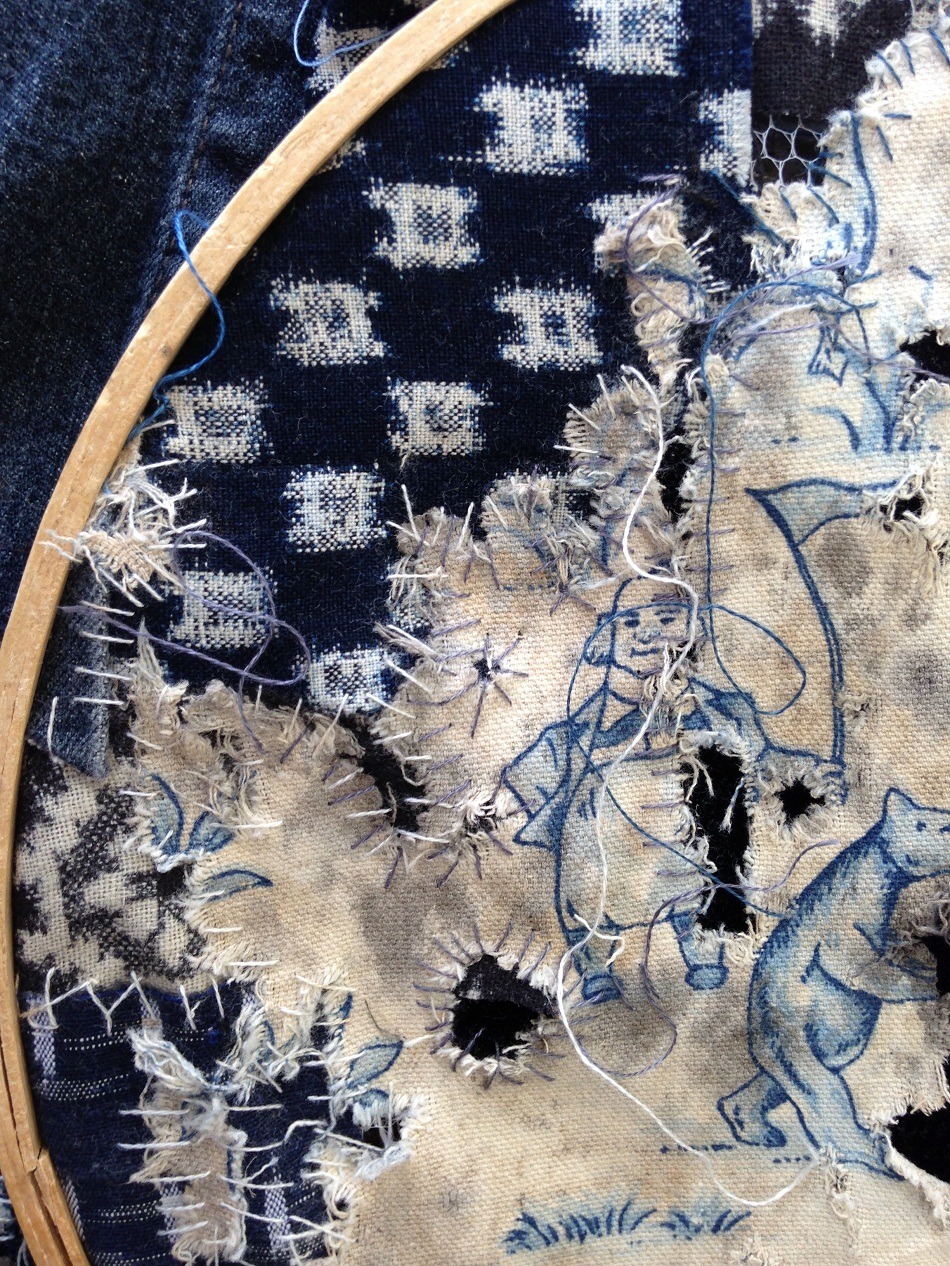
Combining elements to represent life experiences
Take us through the creation of the piece stage by stage
For the wall hanging, I began by throwing pieces of cloth on the floor!
For me, arranging them and making disparate elements into a whole cloth composition is intuitive. It was important to me to create a mixed up order which I can bring under control by stitching. I leave tails of thread to represent the messiness of life.
I worked in a triptych; a series of three banners of sizes that refer to the human body. Little pieces were pinned together onto a sheer net backing. I pinned sections to the wall and then edited, edited and edited!
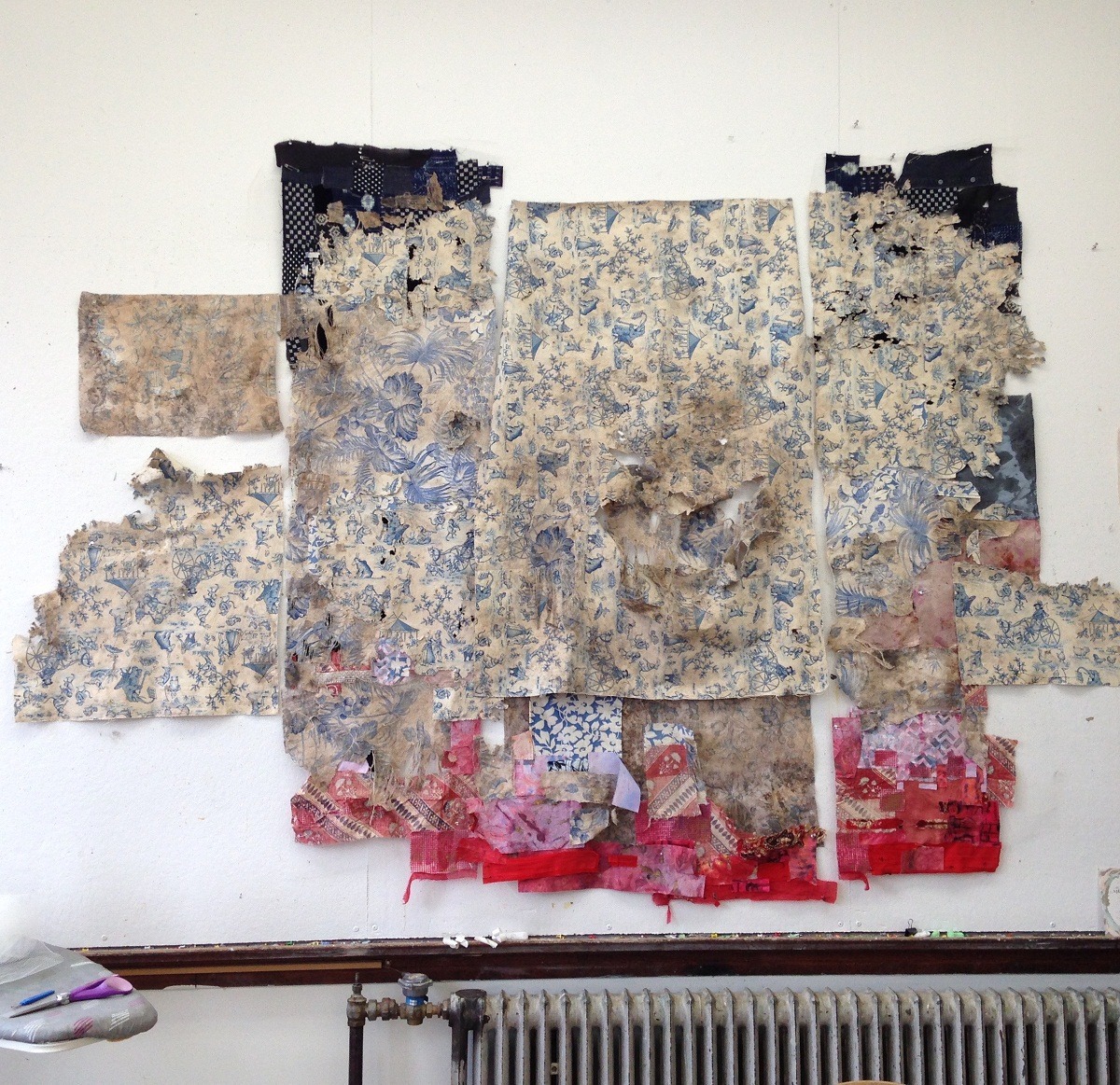
Once I was satisfied visually, I stitched. I find hand stitching terrifically calming and comforting.
For the floor piece, I stitched vintage linen resist-dyed in blue, evocative of old architectural prints. I created a series of drawings to help me re-imagine layouts of my childhood bedrooms, to work out the length of walls, size of windows and arrangements of furniture. Graph paper helped me figure out how to transfer the floor plans from small drawings to the large sheet of fabric.
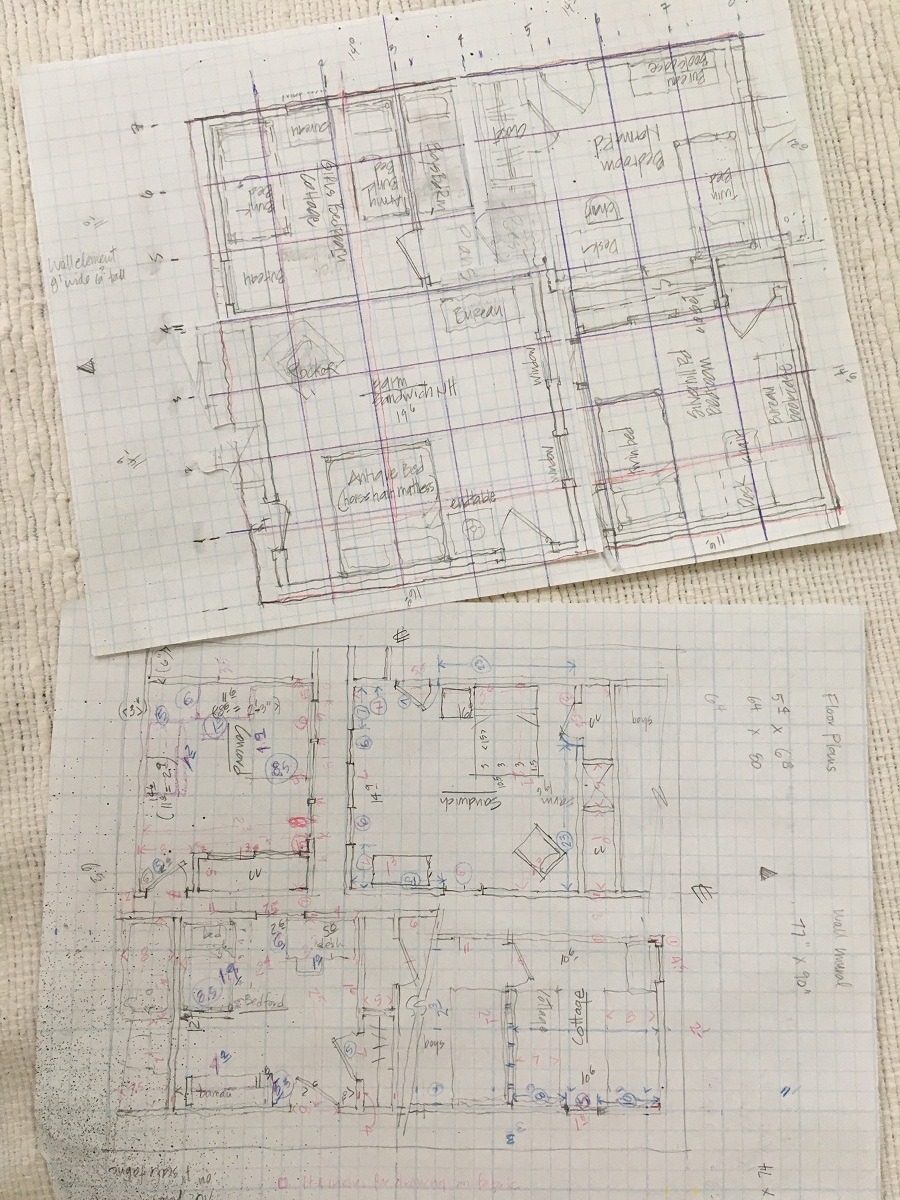
I created a series of stencils to mimic the varied widths used in architectural drawing. After stencilling the plans, I drew an overlay of light guidelines in a grid, to follow while stitching with red fibres.
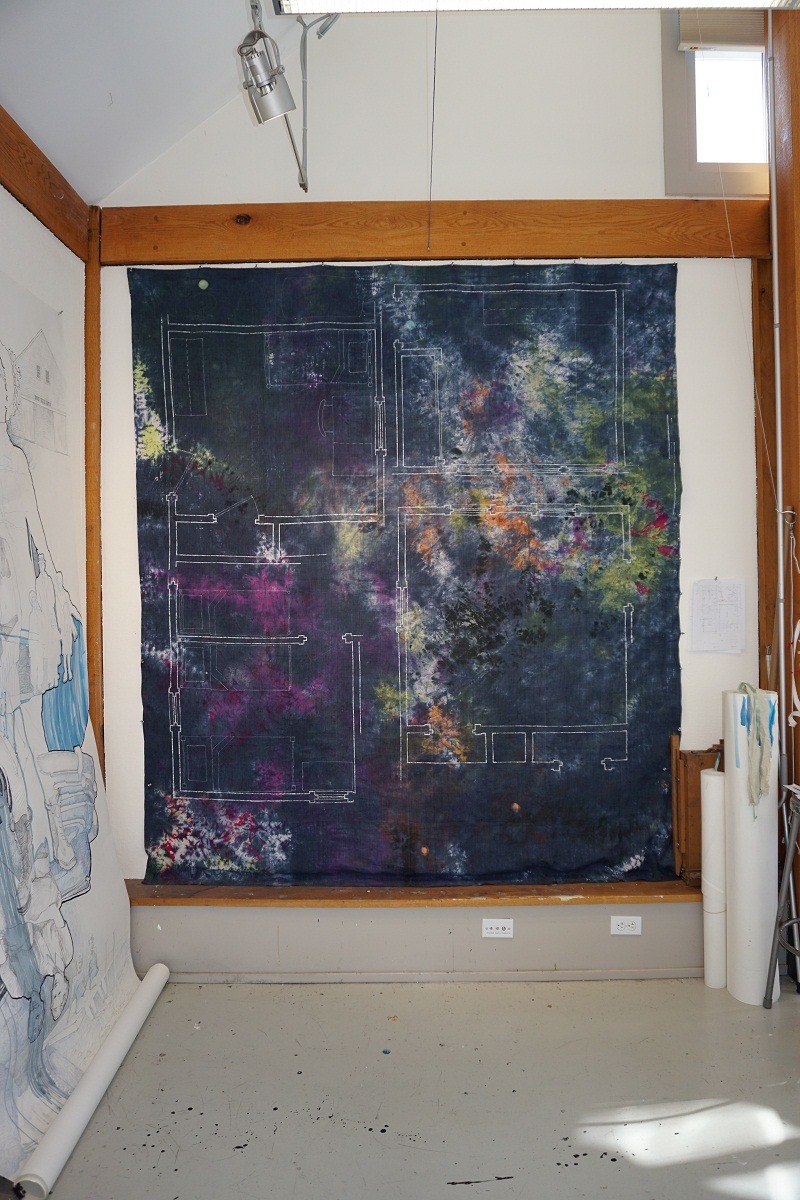
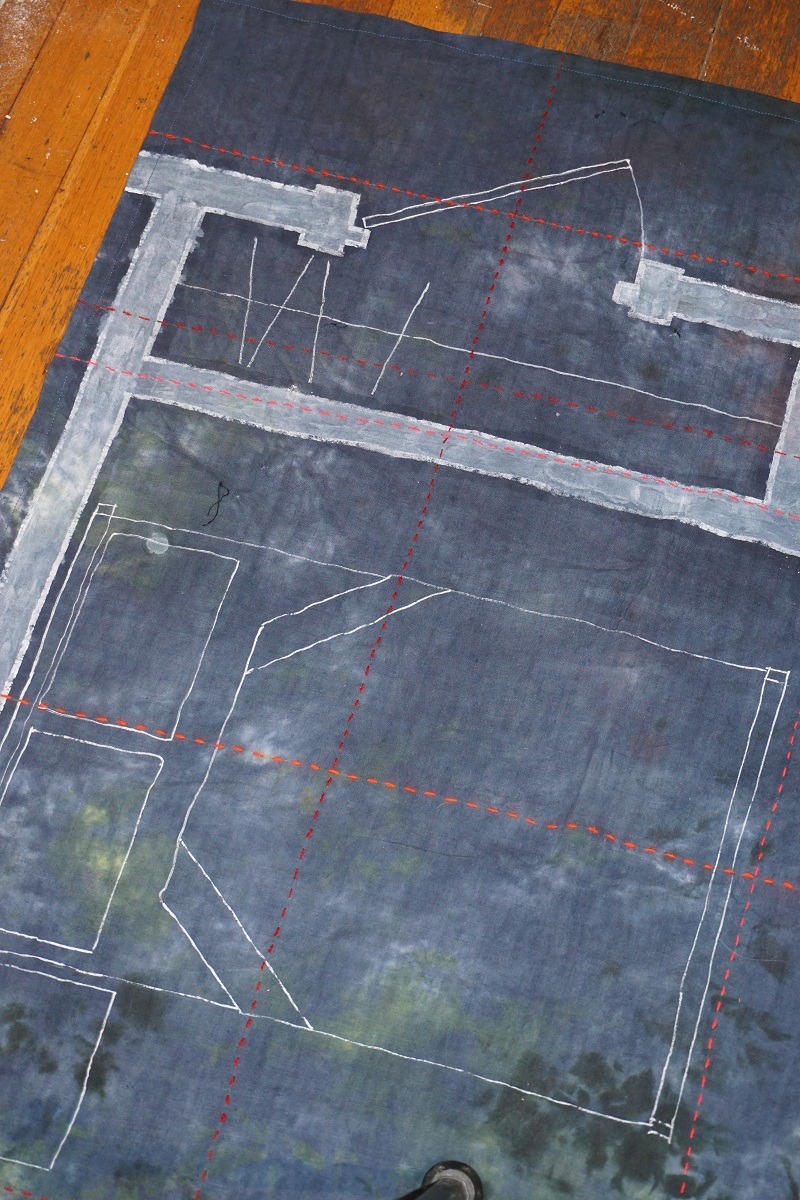
The shirts in ‘Foundational Garments’ developed slowly over time. In my sketchbook, I collected notes on defining moments with my mother. I thought about dialogue, images and ideas. There were a lot of messages instructing me how to be a ‘proper female’. Stories were painful, absurd, funny and archaic.
Each shirt tells one of these stories.
I stained, rusted, deconstructed, reconstructed, embroidered, attached sticks, incorporated weights, installed grommets, lined with hair and drew pictures.
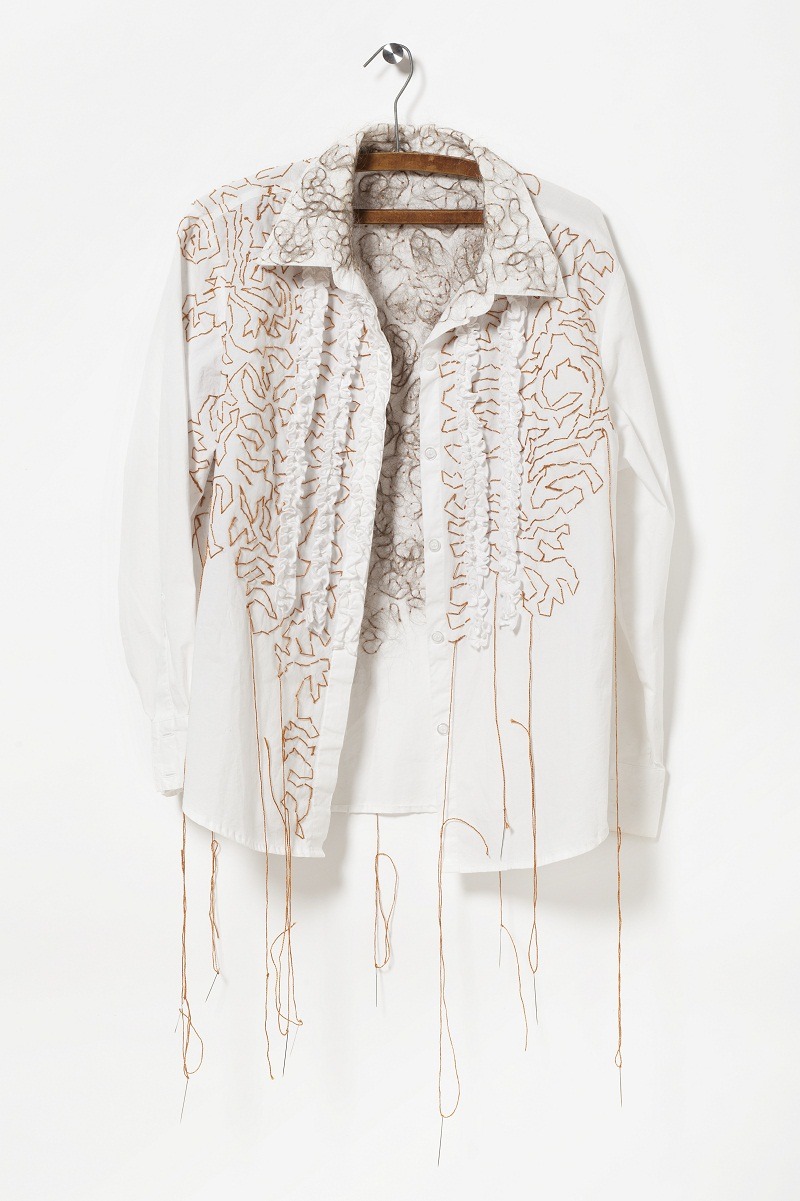
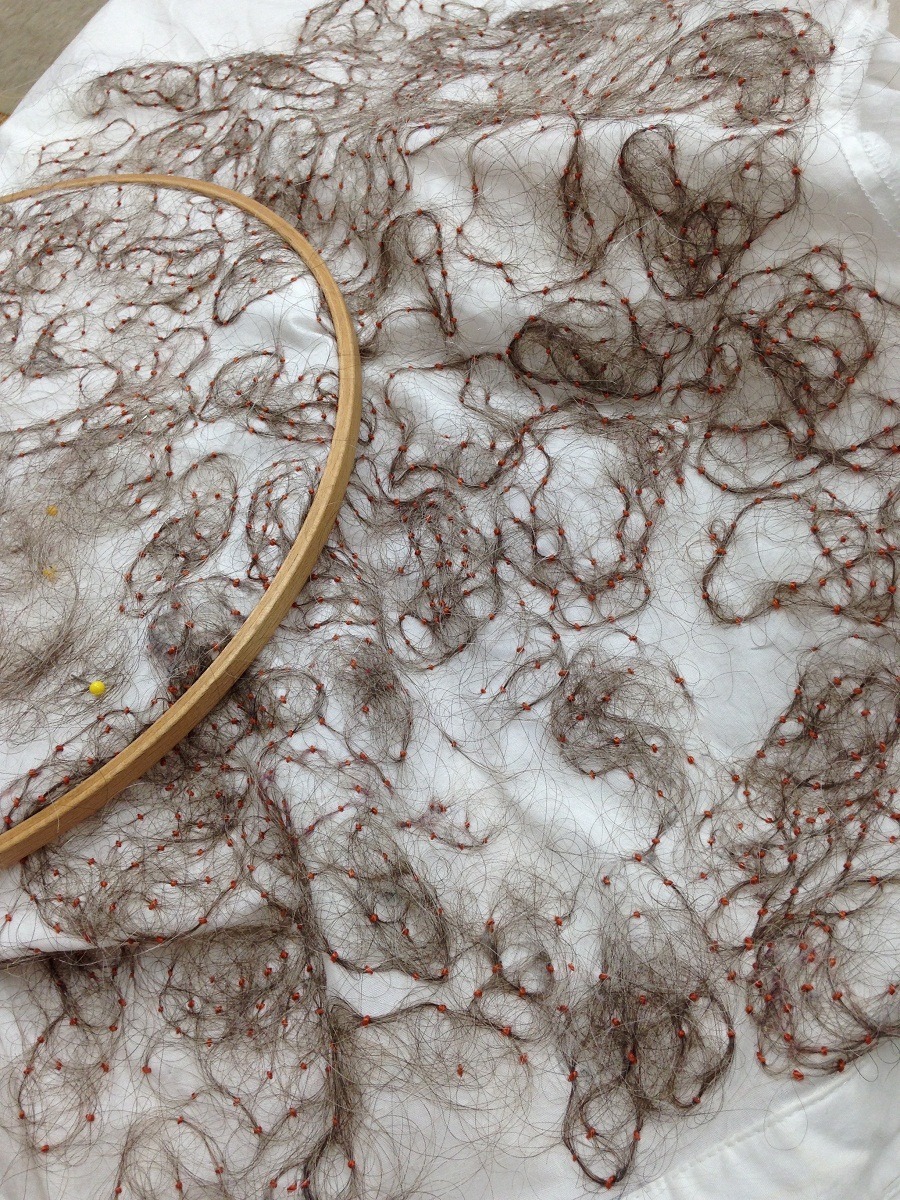
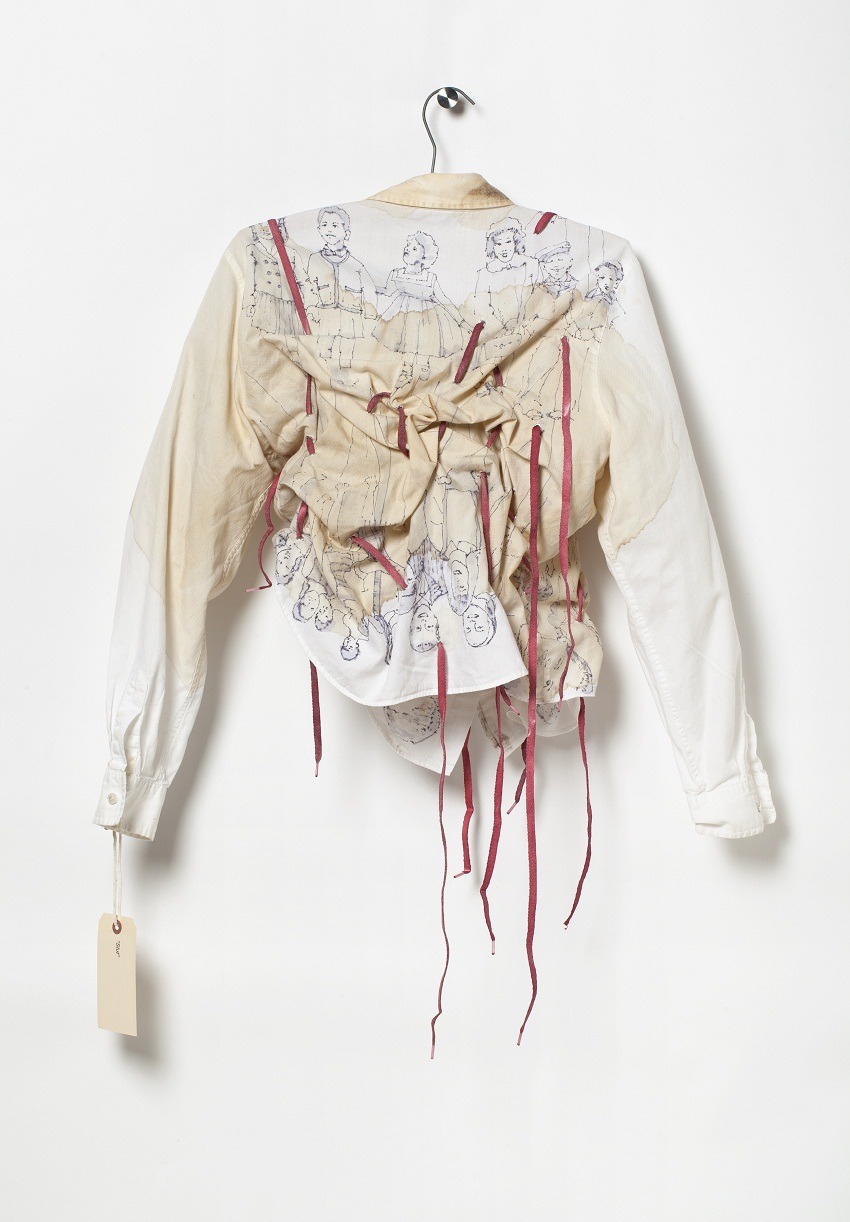
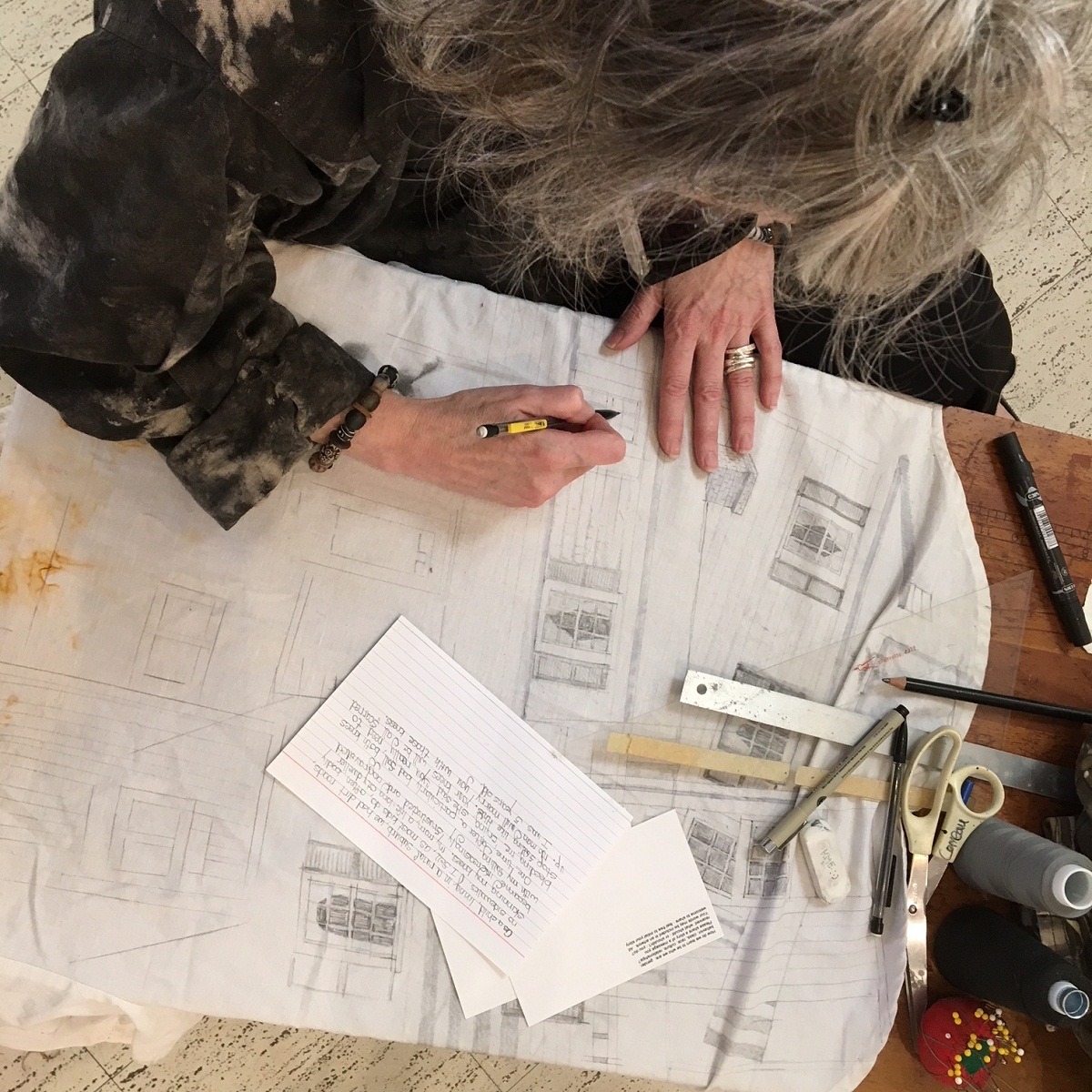
As the shirts multiplied and I hung them on the rack, I realised I had created my version of a “fashion collection.” To guide the viewer to the shirts’ covert stories, I created labels for each with titles, quotes and clues.
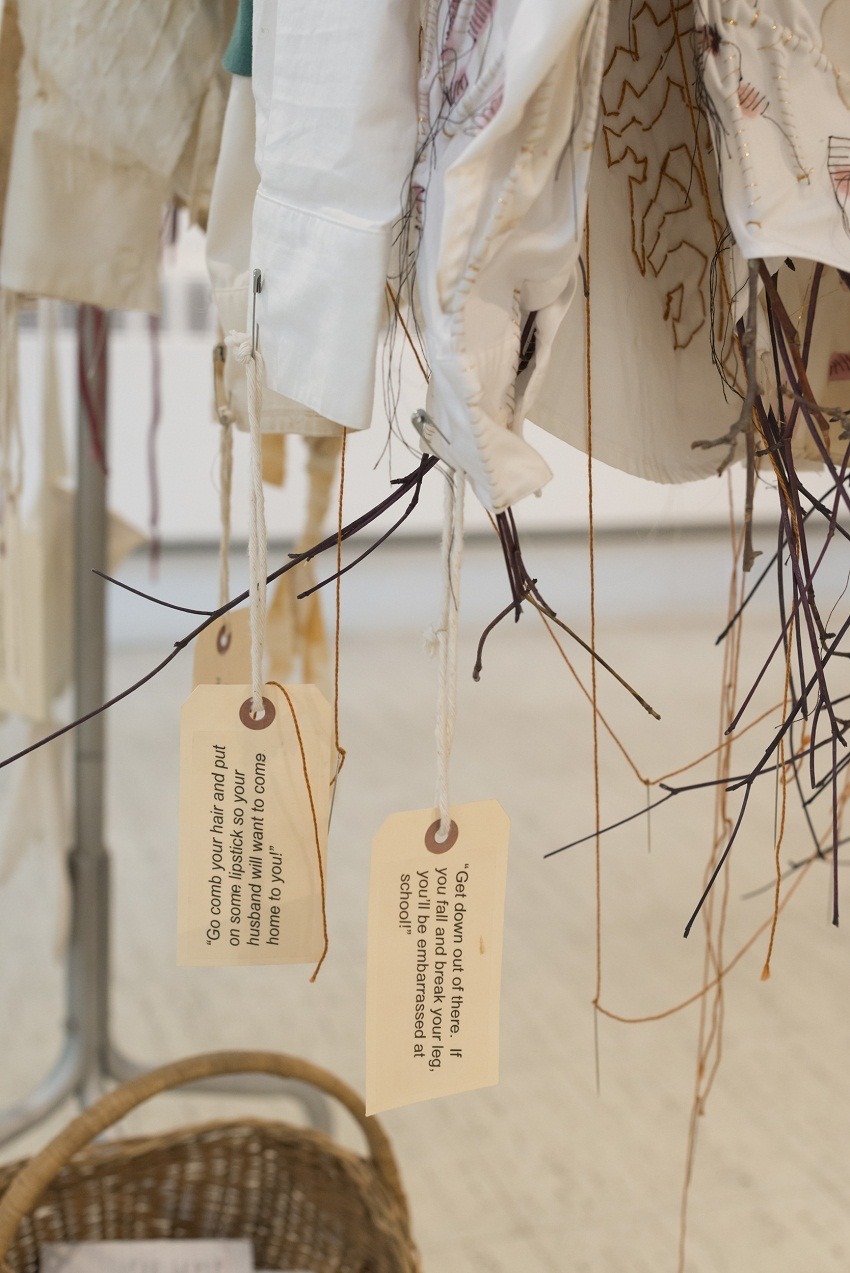
Spoofing myself, I strung white cotton gloves on the rack, as though these damaged goods should be handled as carefully as precious quilts. I’m glad I did because, unexpectedly, viewers can’t seem to help but touch the garments! Now I ask people to don the gloves before they do.
Putting these three pieces together I referred to domestic spaces. I used the elements to reinforce each other and give the feeling of a room. This installation provides a window into my life experience, asking the viewer to ponder the complex story of our common human experience – our Family of Origin.
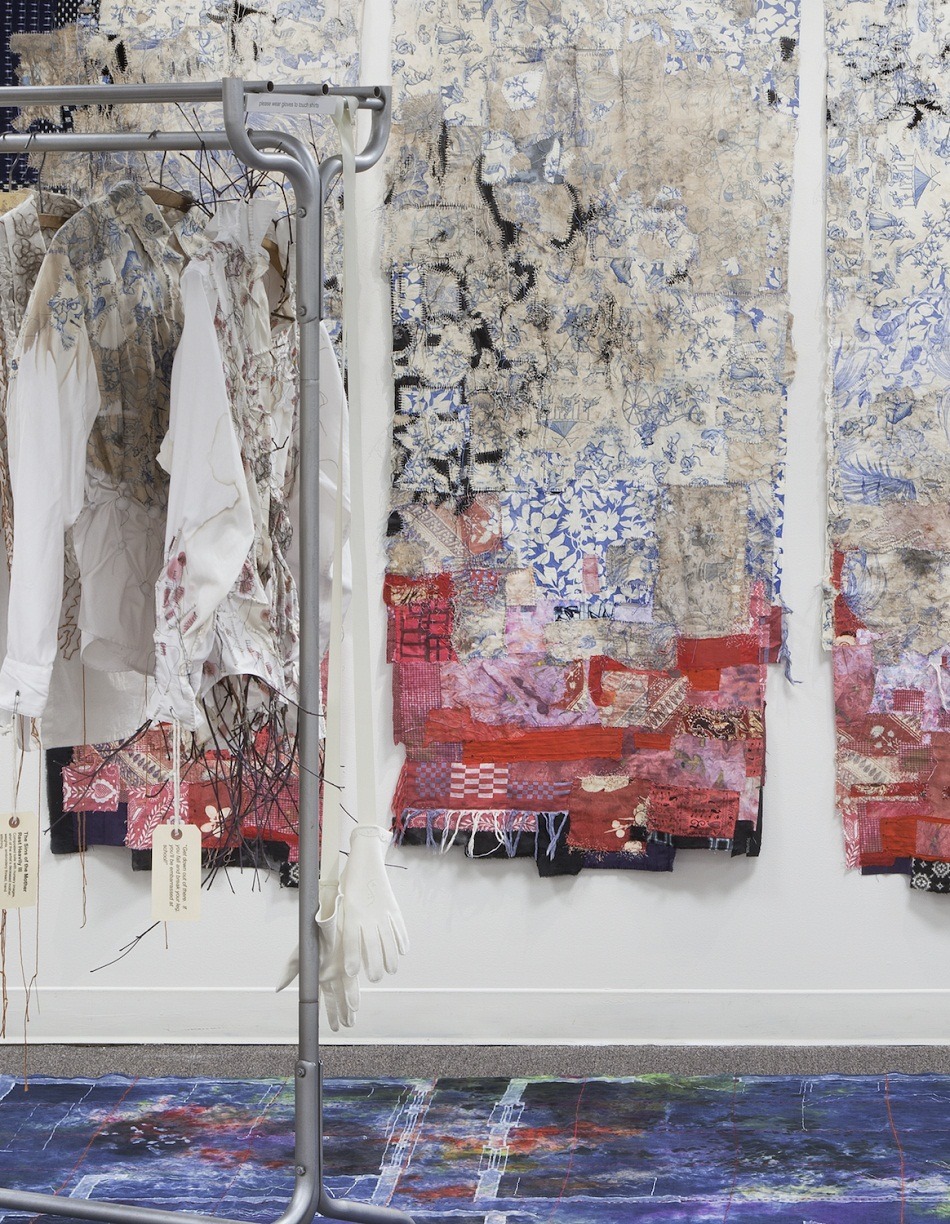
What journey has the piece been on since its creation?
‘Family of Origin’ and another related installation were first exhibited in a two-person exhibition ‘Some Semblance Of‘ at ArtSpace, Maynard, MA which I organized with friend and colleague Jenny Carpenter. Her work relates to mine; she paints family portraits with stain on wood grain to explore her own and her children’s identities.
In addition, Family of Origin was exhibited in ‘Possible Subject Positions’ at Lamont Gallery, Phillips Exeter School, Exeter, NH and at a feminist art exhibition ‘Glass Ceiling: Limitless View’ organised by the New Hampshire Women’s Caucus for Art and held at 3S in Portsmouth, NH.
‘Family of Origin’ was part of my solo exhibition at Chandler Gallery, Maud Morgan Art Center, Cambridge, MA, and appeared in ‘Order/Chaos‘ an online Surface Design Association exhibition.
Individual elements of the installation have been included in exhibitions at Danforth Art Museum, Framingham, MA and STITCH: Syntax/Action/Reaction at New Art Center, Newton, MA.
One of the shirts from Foundational Garments will be in the exhibition ‘Context: Language, Media, and Meaning’ by the Surface Design Association at the Fuller Craft Museum, Brockton, MA, opening 27th October 2019.
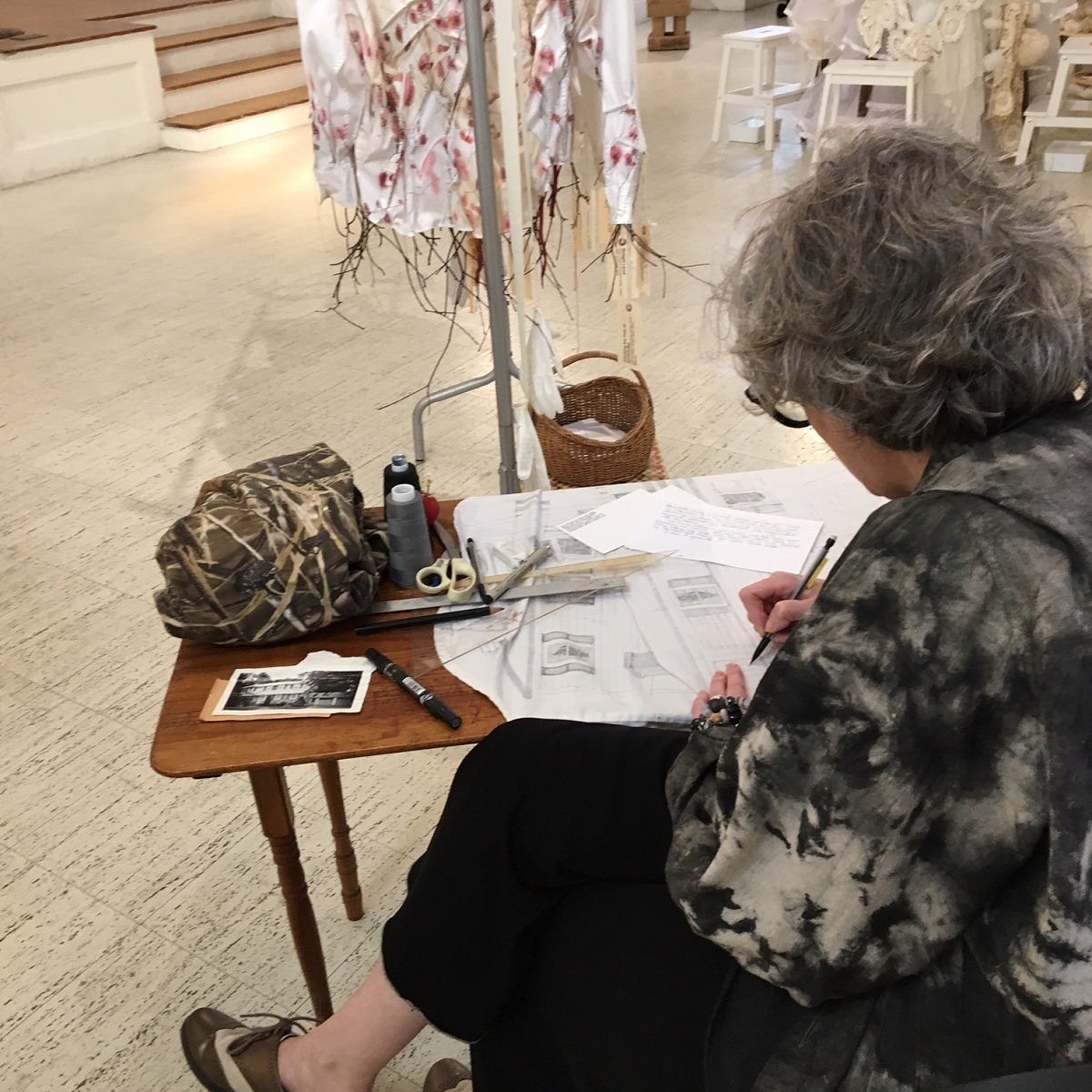
For more information visit www.merillcomeau.com
Did you enjoy reading about the concepts behind Merill’s work? Let us know by leaving a comment below
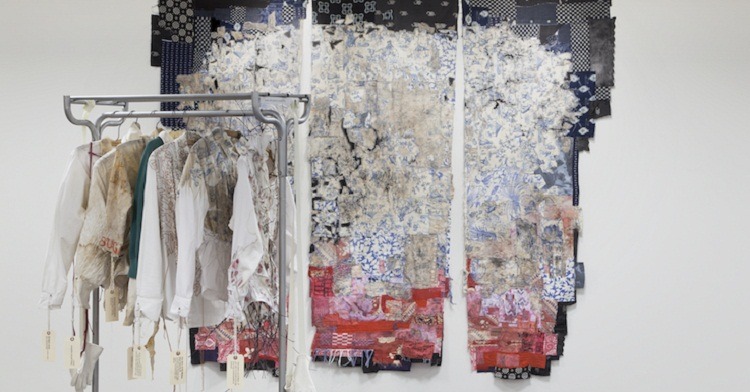

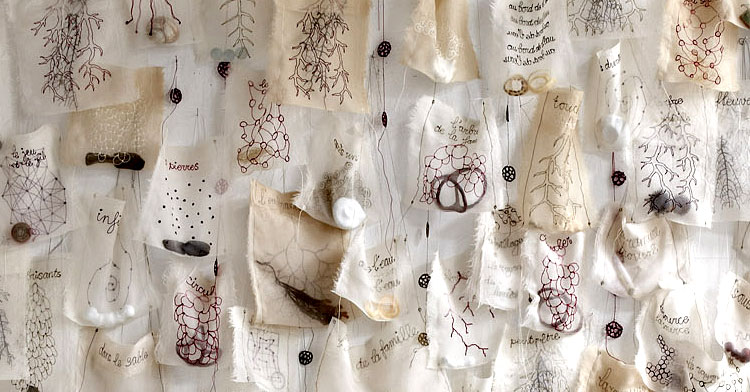
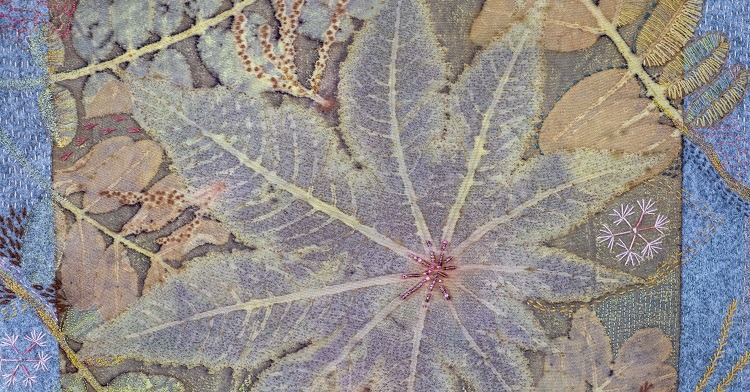
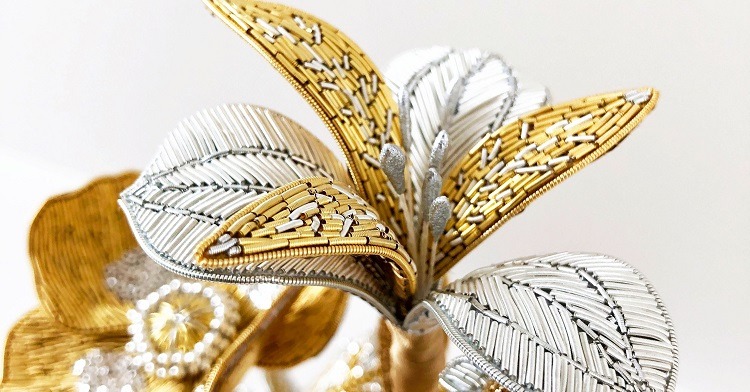
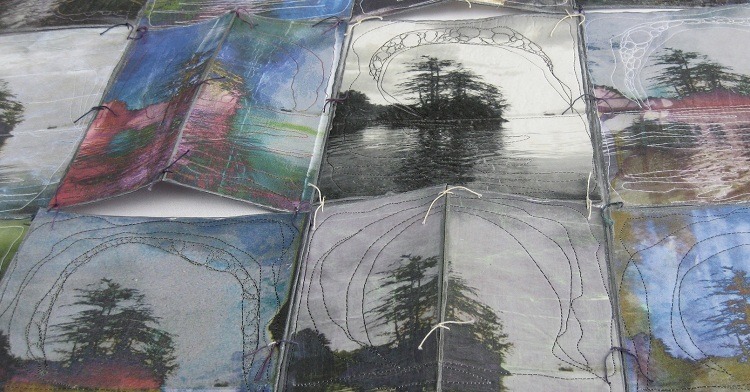
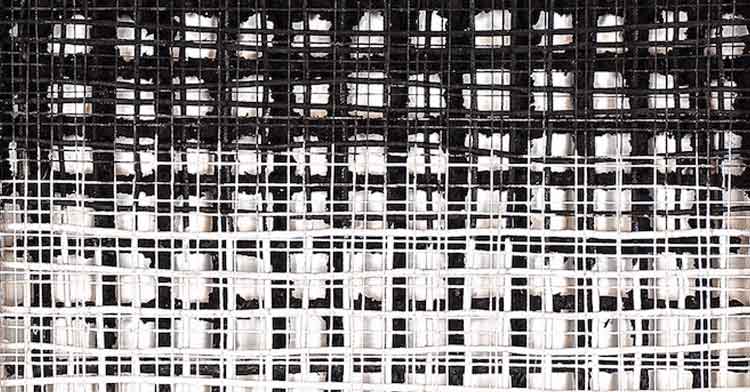
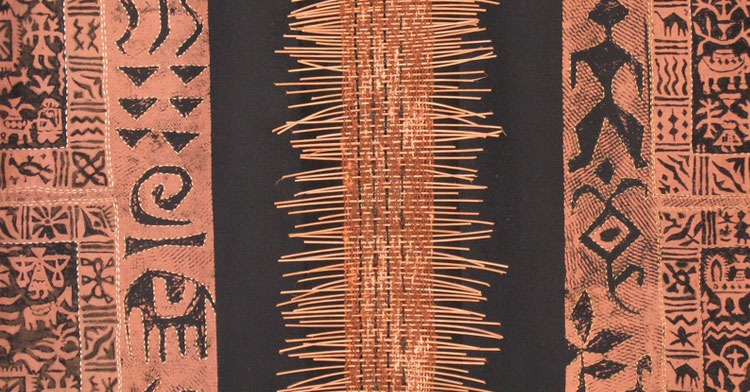
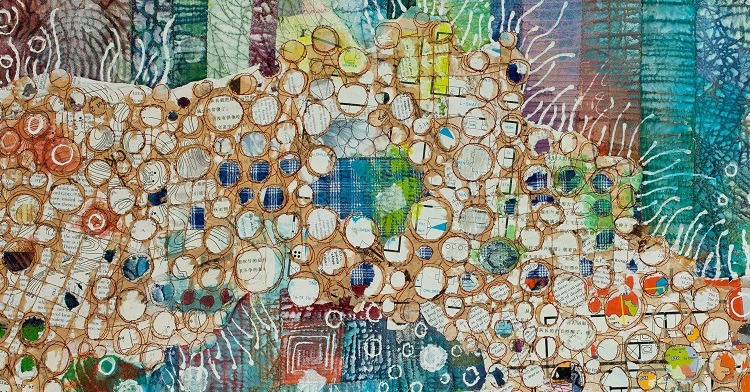
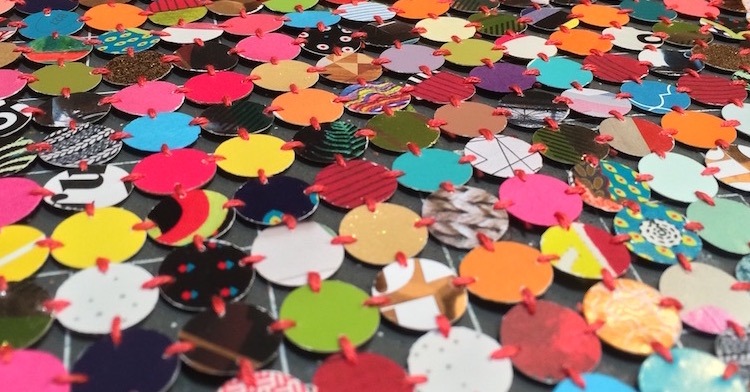
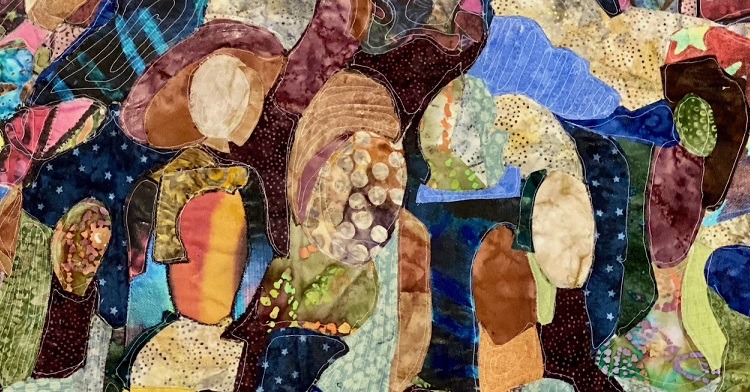
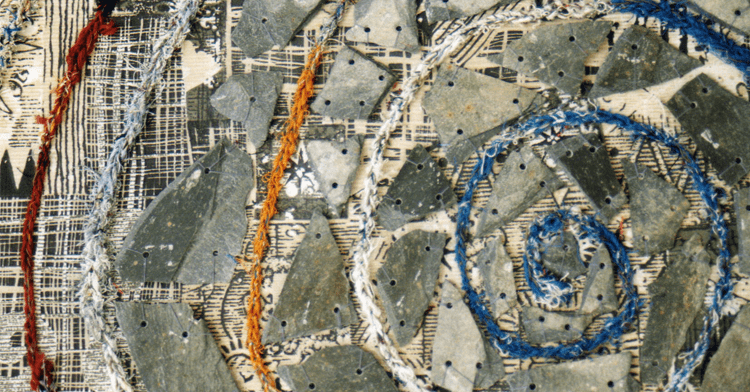
18 comments
Angela McArthur
Merril, Thank You for your inspiration. Your article and video really resonated with me.
It’s been quite some time since I’ve truly created anything. You gave me a lot of food for thought. I always get trapped in the ‘detail’ and land up never starting, but by using words and less pictorial detail gives me hope of attaining my goal.
I still need a push, but feel I’m now ready to ‘just go for it’.
Marilyn Beeston
WOW, thank you for sharing Sue Stone’s and Merill Comeau’s work.
I loved the “Family of Origin” I could look at this piece over and over again finding little areas not discovered before. The work ” Best Laid Plan” appeared to take on a whole different look once it was hung. The colours really come alive.
Thank you for the inspiration.
Jan Kiek
Fantastic! Love the “sayings” of your mother particularly. Rings lots of bells!
jeanne gray
what an inspiration you are to encourange artists to bring to the surface the feelings of their past. art can be an incredible healing. i so admire your work and am truly inspired by what you do. thank you so much
Moni
I am grateful for your sharing and really inspired, thank you for your beautiful art!
Kate Taluga
I can hardly wait to work with your thought process on making art. So many great ides to explore.
Gill Wild
Thank you so much for your generous sharing of your thoughts and process. Truly inspiring and fascinating. I have been wanting to do something in a similar vein for years, for myself, but whenever I begin to try and gather memories, thoughts and feelings it all becomes overwhelming. Your article might have provided a way in. Thank you.
Jayne Butler
As I read your progress I am forcefully reminded of my own ‘family origin’ and weep for the woman/child (eldest of 9 siblings) who was continually denigrated by female teachers, relatives, mother and still wonder what it was that prompted the outburst at breakfast ‘you DONT deserve to be pretty and have nice teeth’ – my aunt never forgave me for some mystery misdeeds! Some memories we stuff metaphorically behind the sofa! I like your thought of the ‘messiness of life’. Thank you for this insight into your construct!
Anneliese Simeloff
Thank you for sharing your ideas and process I really appreciate it and am touched/delighted in how you express that ultimately we all share the ‘Family of origin” you refer to in the title. So good. Congratulations
Anne
Fantastic insight into process. Have sent it to my fashion students. Thank you for sharing.
Cathy Kenkel
thanks for the clear setting out of your physical and thought processes. Fantastic layering of ideas and fabrics. I’m not that familiar with toile – will have to do some research! Thanks. Cathy.
I.M.
Great article, what an inspiration. Merrill’s artwork is fantastic and the garment is incredibly beautiful. LOVE, love, love it! 🙂
Ann Brown
What an inspiration! Thank you for sharing Merill. I love rustef and decayed materials, and you have handled them beautifully.
Jude Williams
I am very impressed by this work and get an inexplicable feeling of calm when I look at it.
I would like to see it in reality to see if it leaves me feeling the same way.
Thank you for creating it.
Barbara James
Meryl, I can’t wait to see your work in all it’s glory at the Art Cloth Network meeting in May. Congratulations on fabulous work.
Marianne
Dear Meryl
,
I like very much your fantastic art, your imagination.
I would like say a big congratulation for you.
Best wishes
Marianne
Rebecca Lilly Segura
What an inspirational read! I love the hidden meanings behind the garments; it brings back things my mother used to say to me as a child. Thank you for sharing your process and stories.
Nicola
I wondered what you meant when you said ‘composting “, and I thought it was a textile term I didn’t know …….but no, you really meant garden composting ! Wow!